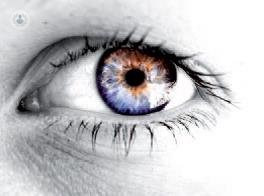Keratoconus: ocular alteration of the cornea
Written by: The doctor. Pastor, specialist of the ophthalmological clinic Oftalvist, explains in this article what keratoconus is, a pathology that affects the cornea and, consequently, diminishes vision.
The doctor. Pastor, specialist of the ophthalmological clinic Oftalvist, explains in this article what keratoconus is, a pathology that affects the cornea and, consequently, diminishes vision.
Keratoconus is an alteration of the cornea that suffers one out of every 1,800 people. Produces progressive thinning of the corneal thickness, as well as modification of its curvature. The spherical shape of the cornea changes to a conical. As a consequence, irregular corneal astigmatism, as well as myopia, which distorts the images and diminish vision. It affects young people.
The cause is unknown, although there are many predisposing factors and theories about its origin. One is genetics. A percentage of patients with keratoconus have affected relatives. It can be of direct inheritance or more sporadic transmission. It has also been related to chronic eye scrape. It is proven that doing it for a prolonged period can trigger keratoconus. It can also be a result of small, persistent trauma to the eye, or using badly adapted contact lenses. Other theories point to the influence of a hormonal factor.
There are different treatments , depending on the degree of the disease. In mild or incipient cases good vision can be achieved by correcting the refractive defect with glasses or contact lenses. In more advanced cases, instead, rigid contact lenses are needed to correct astigmatism. Its use will allow good vision, since in this phase the glasses do not provide visual acuity. In cases in which contact lenses are intolerated or do not provide visual acuity, the treatment is surgical with rings or intracorneal segments, whose objective is to regularize the corneal curvature and reduce astigmatism.. The surgery can be manual or with a femtosecond laser, which provides precision and accuracy, improving the postoperative results. When the pathology is very advanced, the treatment is the cornea transplant. Currently it can be done by replacing affected layers and conserving healthy tissue.


